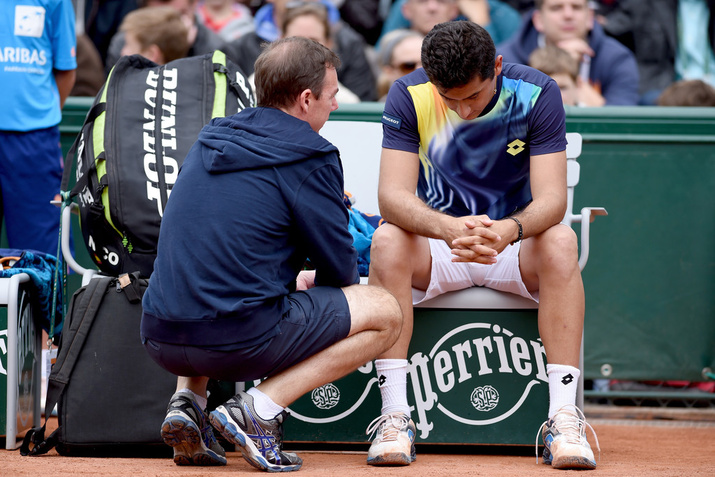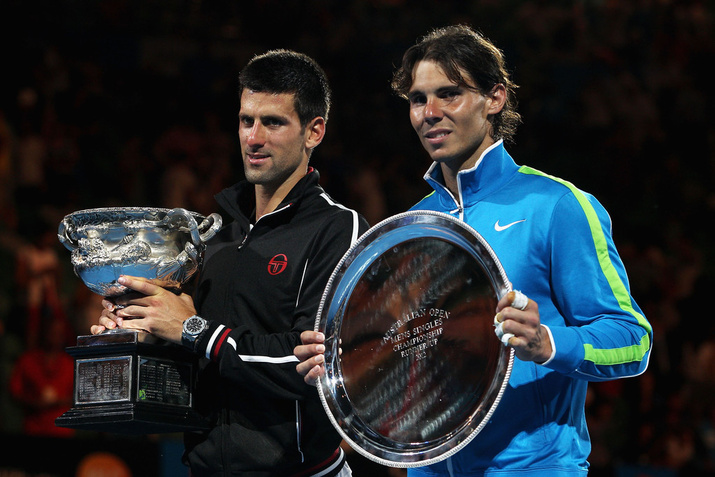Don't miss any stories → Follow Tennis View
FollowViewpoint: Playing Best-of-Five at Grand Slams
As the French Open ebbs and flows through its first week, calls from the tennis community for the ITF to reexamine the format of men’s Grand Slam matches become louder. It’s easy to understand the critics’ point of view, especially after some notable injuries in the first week. However, while a solid case is made, there isn’t enough evidence to suggest that the ITF should break tradition and reformat the men’s Grand Slam matches. This move would not only change the ATP but have significant ramifications for the tennis world.
The sport of tennis has always shown the ability to accommodate change. Whether it’s forced by rapidly evolving technology or forced by an evolving world, tennis has adapted well over the years. But the one factor about the professional game is that it is a demanding schedule that often takes a toll on the players. And you can understand the critics’ point of view that reducing the length of men’s Grand Slam matches may alleviate the heavy injury rate that we have seen on the tour, especially in early 2014.
In the first half of this season, the ATP World Tour has experienced an unusual amount of players who have succumbed to injury, fueling many calls for the reformat of men’s grand slam matches. This was no more evident than in the Australian Open final, when world No. 1 Rafael Nadal broke down with a back injury. During the Australian hard-court summer, injury also claimed high-ranked players Tommy Haas, John Isner, Philipp Kohlschreiber, and Vasek Pospisil.

More recently, in the first week of the French Open, seeds such as Haas, Kei Nishikori, and Nicolas Almagro have succumbed to injury, forcing them to retire or deliver lackluster performances in the first round. Whether such an injury toll can be attributed to the five-set format in Grand Slams cannot be known, but it’s fair to suggest that players do shoulder a heavy load in terms of tournament scheduling.
However, this isn’t a new phenomenon. Players on the ATP Player Council as well as ordinary players on the circuit have often criticized the ITF and the ATP for packing tournament schedules. Some, like Rafael Nadal, have also blamed a large number of injuries on packed hard-court schedules. But all players have stopped short of wholly suggesting that Grand Slam matches should be reduced to a best-of-three format because there seems to be no obvious connection between injury and the best-of-five format.
Statistics are also used by critics to suggest that the best-of-five format is antiquated and redundant. In the first three rounds of last year’s French Open, a whopping 94% of matches were won by the player who won the first two sets, with 116 extra sets only producing four comebacks. And the statistics didn’t differ too much in the other Grand Slams during the year. Adding to their point is the decreased probability that there will be a five-set comeback from a lesser-ranked player. But while the statisticians may have a point in suggesting that more would be gained than lost by giving tournaments more time for extra matches each day, suiting the television coverage and offering more entertainment for the crowds, there is so much to appreciate about the tradition and the intensity of a five-set thriller.
Tennis is a sport deeply rooted in tradition, from the all-white playing clothing at Wimbledon to its rich history of Grand Slam winners. And what makes tennis a great sport is the respect and prestige it enjoys at the elite stage. Changing the format at Grand Slams would be a considerable buck against the historical trend and would usher in strange new era at Grand Slams filled with shorter and often less memorable battles. Epic matches played in the annals of history would become anachronisms, like the classics between Jim Courier and Andre Agassi at the French Open in 1991, Jimmy Connors and Patrick McEnroe at the US Open the same year, Roger Federer and Rafael Nadal at Wimbledon in 2008, and Nadal and Novak Djokovic at the Australian Open in 2012. It’s important that tennis latches on to the history that has made it such an entertaining and memorable sport and keeps the battle of attrition a vital part of the men’s game.

Tennis is a confrontational game between two opponents, and the argument that a best-of-three set match would be beneficial over a best-of-five set for the crowd is simply an over-analysis of statistics. Not only would a best-of-three set match between men at Grand Slams diminish the level of competition between opponents, it would also reduce the amount of memorable matches that take place so regularly at Grand Slams and that also attract people to the game of tennis.
In a world where so many are eager to embrace the fruits of the technological world, there are perhaps facets of the game that should be protected as trademarks of the great game are slowly diminishing with the passing of time. The saying “if it isn’t broken, there’s no need to fix it” is very relevant in this case, and one suggests that the best-of-five set format should be left well enough alone.










